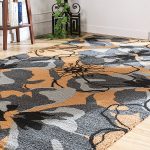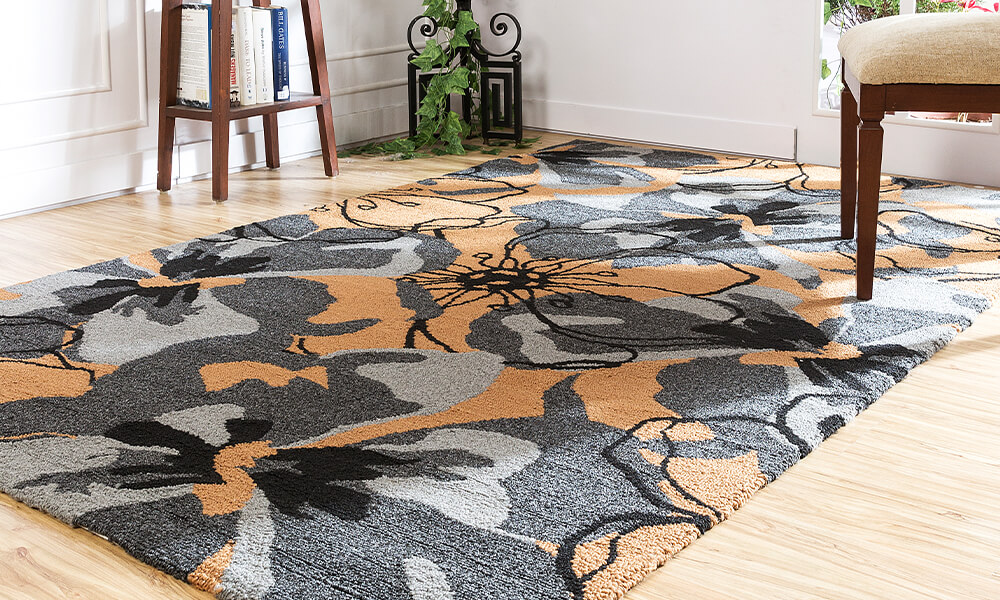Hand knotted carpets represent the finest form of floor art. Skilled artisans create each piece by tying individual knots by hand, resulting in durable rugs that can last for generations. These carpets bring warmth, color, and cultural richness to any space.
However, buying the perfect hand knotted carpets involves more than choosing beautiful patterns or colors. Size matters most when it comes to transforming your room from ordinary to stunning. A carpet that’s too small will make your furniture look like it’s floating on an island. A carpet that’s too large will overwhelm your space and create visual chaos.
Getting the size right affects everything—from how your room flows to how comfortable it feels. The right carpet size can make a small room appear larger or help define different areas in an open floor plan. When you buy rugs in India or from any quality dealer, understanding proper sizing will help you make an investment that enhances your home for years to come.
Why Size Selection Matters More Than You Think
The size of your hand knotted carpet determines whether it becomes the perfect foundation for your room or an expensive mistake. Proper sizing affects three key areas: visual balance, functionality, and value.
Visual balance happens when your carpet complements rather than competes with your furniture and room proportions. A well-sized carpet creates harmony between all elements in your space. It anchors your furniture groupings and defines conversation areas naturally.
Functionality improves when your carpet size matches how you actually use the room. In dining areas, the right size prevents chairs from catching on carpet edges. In living rooms, proper sizing ensures everyone can place their feet comfortably on the carpet while seated.
Value protection occurs when you choose sizes that work in multiple spaces. Standard sizes hold their resale value better and give you flexibility if you move or redesign your room.
Step-by-Step Guide to Measuring Your Space
Accurate measurements form the foundation of smart carpet selection. Start with these essential tools: a measuring tape, paper, pencil, and painter’s tape for marking.
Step 1: Measure the entire room. Record the length and width of your space, noting any architectural features like fireplaces, built-in cabinets, or doorways that might affect carpet placement.
Step 2: Map your furniture layout. Measure each piece of furniture and note its current position. Mark these measurements on your room sketch. Include coffee tables, sofas, chairs, and any other pieces that will sit on or around the carpet.
Step 3: Plan traffic flow. Walk through your room and identify the main pathways people use. Your carpet should enhance, not obstruct, natural movement patterns.
Step 4: Use painter’s tape to outline potential carpet sizes. This visual exercise helps you see how different dimensions will look before you make a purchase. Try multiple sizes to compare the visual impact.
Step 5: Take photos. Capture images of your taped outlines from different angles. These photos will help you remember what worked best when you’re shopping for hand knotted carpets.
Room-Specific Placement Guidelines
Different rooms have different carpet sizing requirements based on their function and furniture arrangements.
Living Room Sizing
Your living room carpet should anchor your seating area. Follow the “front legs on, back legs off” rule for sofas and chairs. This means the front legs of your furniture rest on the carpet while back legs can extend beyond the carpet edge.
For larger living rooms, consider the “all legs on” approach where your entire furniture grouping sits completely on the carpet. This creates a cohesive, luxurious feel but requires larger carpet sizes.
Leave 18-24 inches of bare floor between the carpet edge and the room walls. This border prevents your space from looking cramped and allows your hand knotted carpet to breathe visually.
Dining Room Requirements
Dining room carpets need extra consideration for chair movement. Measure your table, then add 24-30 inches on each side where people will be seated. This extra space ensures chairs remain on the carpet even when pulled out for seating.
For rectangular tables, choose rectangular carpets. Round tables work best with round or square carpets. The carpet should be visible beyond the table edges by at least 12 inches on all sides when chairs are pushed in.
Bedroom Placement
Bedroom carpet placement depends on your bed size and room layout. Popular options include placing a large carpet under the entire bed with equal amounts extending on three sides, or positioning a smaller carpet at the foot of the bed.
For bedrooms with seating areas, treat that space like a mini living room. Apply the same front-legs-on principle for chairs and small sofas.
How Furniture Affects Your Size Choice
Furniture size and arrangement directly impact which carpet dimensions will work in your space. Heavy, bulky furniture requires larger carpets for proper visual balance. Light, minimal furniture can work with smaller carpet sizes.
Consider the height of your furniture legs. Low-profile furniture with short legs looks best when sitting completely on the carpet. Tall furniture with exposed legs can straddle carpet edges more successfully.
Account for furniture you might add later. If you plan to buy a larger dining table or additional seating, factor these future purchases into your current carpet size selection.
Multi-functional spaces need flexible carpet solutions. If your dining room sometimes serves as a work area, choose a size that accommodates both uses comfortably.
Standard Hand Knotted Carpet Sizes Explained
Understanding common carpet sizes helps you make informed decisions and can save money compared to custom options.
Small sizes (3×5 to 4×6 feet) work well as accent pieces in bedrooms, bathrooms, or entryways. These sizes add color and texture without overwhelming smaller spaces.
Medium sizes (5×8 to 6×9 feet) suit most living room seating areas and smaller dining rooms. These popular dimensions offer good value and work in many different room layouts.
Large sizes (8×10 to 9×12 feet) accommodate bigger furniture groupings and create dramatic impact in spacious rooms. These sizes work well for open floor plans where you want to define specific areas.
Extra large sizes (10×14 feet and up) suit grand rooms, commercial spaces, or homes where you want maximum coverage. These impressive pieces become the room’s focal point.
When you buy rugs in India, you’ll find these standard sizes readily available in most patterns and styles. Standard sizes also cost less than custom dimensions and arrive faster.
The Custom Sizing Option
Custom-sized hand knotted carpets offer the perfect solution when standard sizes don’t fit your space properly. Many Indian carpet manufacturers accept custom orders, allowing you to specify exact dimensions.
Custom sizing works best when you have unusual room proportions, specific design requirements, or when you want to maximize coverage in your space. The process typically takes 3-6 months longer than standard sizes, depending on the complexity and size.
Consider custom sizing when your measurements fall between standard sizes. Rather than compromising with a too-small or too-large option, custom dimensions ensure perfect fit and maximum visual impact.
Budget for higher costs with custom orders. Expect to pay 20-40% more than comparable standard sizes. However, the perfect fit often justifies the additional investment, especially for high-quality hand knotted carpets.
Using Visual Aids for Better Decision Making
Visual planning tools help you avoid costly sizing mistakes. Start with your room photos showing the taped carpet outlines. Compare different size options side by side to see which proportion looks most balanced.
Create a scaled floor plan using graph paper or free online room planning tools. Draw your room to scale, add furniture, and test different carpet sizes. This bird’s-eye view reveals proportion issues that might not be obvious when standing in the room.
Visit showrooms when possible to see actual carpet sizes in person. Many people underestimate how large an 8×10 carpet actually appears in a room. Seeing full-size examples helps calibrate your expectations.
Take advantage of technology. Some retailers offer augmented reality apps that let you virtually place carpets in your room using your smartphone camera. These tools provide surprisingly accurate size visualization.
Making Your Final Size Decision
Perfect carpet sizing combines measurements, visual balance, and practical considerations. Start with your accurate room measurements, then consider your furniture arrangement and how you use the space.
When you buy rugs in India or from other quality sources, ask about their return policy. Some dealers allow exchanges if the size doesn’t work as expected, though custom orders typically cannot be returned.
Think long-term when selecting hand knotted carpets. These pieces should serve your home for many years. Choose sizes that work with your current space but offer flexibility for future room changes.
Consider buying slightly larger rather than smaller when choosing between two size options. Larger carpets create more luxurious, cohesive looks, while too-small carpets often appear inadequate regardless of their quality or beauty.
Professional interior designers can provide valuable sizing advice, especially for challenging spaces or expensive purchases. Their expertise often prevents costly mistakes and helps you achieve better results than going it alone.
The investment in properly sized hand knotted carpets pays dividends in beauty, functionality, and satisfaction for years to come. Take time to measure carefully, plan thoroughly, and choose sizes that truly fit your space and lifestyle.




















